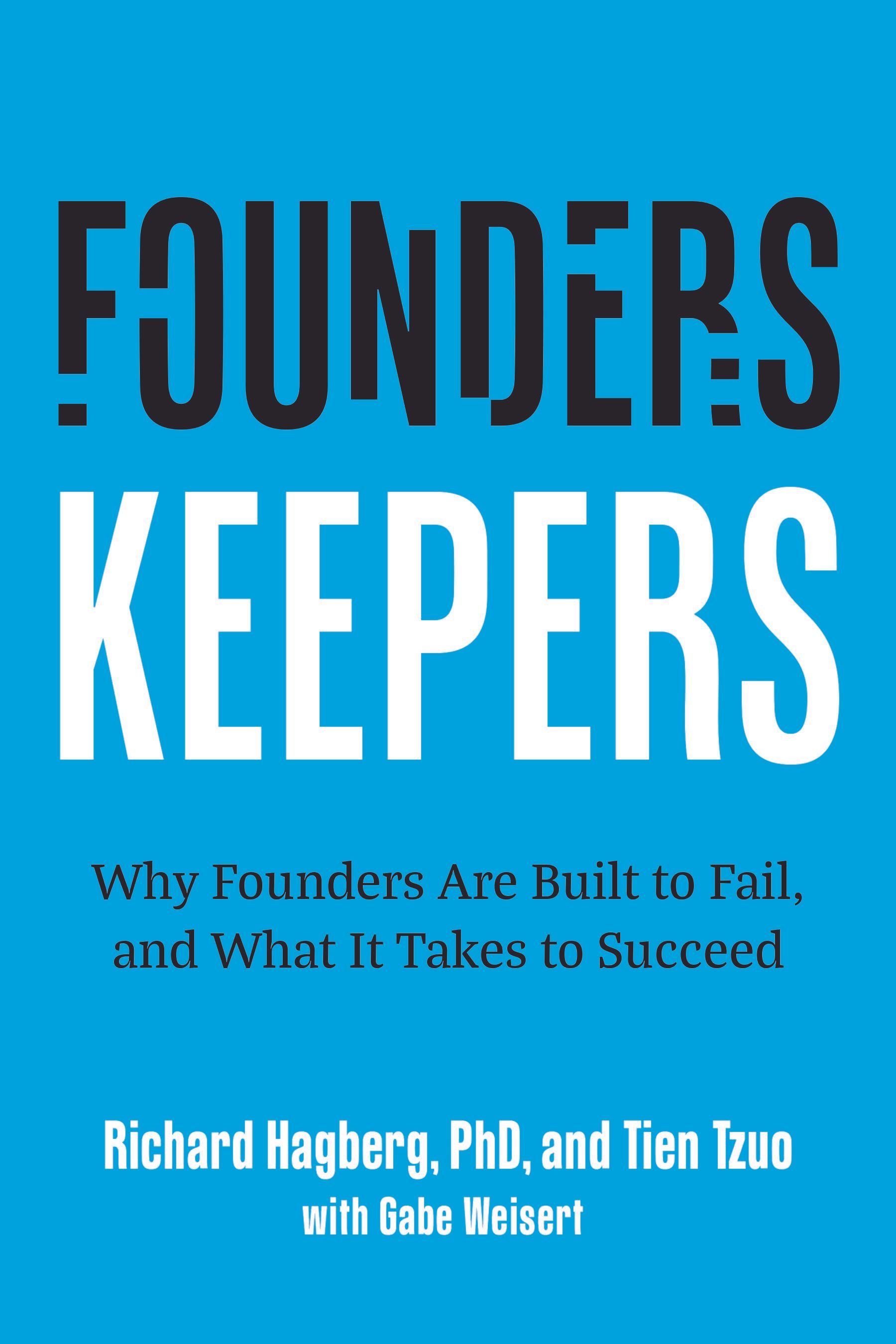Coaching To Develop the Leadership Capability on Your Team
- Are some of your current team members having difficulty scaling?
- Are they in their roles for the first time and learning to lead on the job?
- Do they have the potential to grow but need feedback and coaching?
Think about investing in their development
Here are the common problems that hold them back
- Inadequate Strategic Thinking: Function heads may be very good at tactical work but might struggle with the strategic aspects of their roles. They may focus too much on short-term gains without aligning their efforts with the long-term vision of the company.
- Resistance to Change: As startups evolve, they frequently need to pivot or adjust strategies. Some team members may resist these changes due to discomfort or uncertainty, which can hinder the startup’s agility and growth.
- Difficulty with Scale: Managers who are effective in a small, start-up environment may not have the skills or temperament to manage larger, more structured teams. This can lead to inefficiencies and bottlenecks as the organization grows.
- Poor Communication Skills: Effective communication is critical in fast-paced startup environments. Managers who cannot communicate clearly and effectively may struggle to lead their teams, manage upward communications, or liaise with stakeholders.
- Overwhelmed by Workload: Startup environments can be high-pressure and fast-paced. Managers who cannot handle their workload effectively might become bottlenecks, causing delays and frustration.
- Lack of Accountability: A common frustration for founders is when team leaders fail to take full responsibility for their teams' outcomes. This can lead to a lack of trust and increased micromanagement from the founder.
- Cultural Misfit: Startup cultures can be unique and intense. Managers who do not fit or who cannot propagate the startup’s culture may struggle to motivate their teams or align with the company’s values.
- Poor Decision-Making: Some managers may lack the decisiveness required in a startup environment, either over-analyzing situations or making hasty decisions without proper consultation or consideration of consequences.
Empowering Leaders:
A Series on Coaching to Unlock Your Team's Full Potential

The Leadership Tightrope If you lead long enough, you start to realize something uncomfortable: everything that makes you effective also threatens to undo you. Your drive becomes impatience. Your confidence becomes stubbornness. Your empathy turns into guilt. The longer you lead, the more you realize that the job isn’t about choosing one trait over another — it’s about learning to carry both. That’s what maturity looks like in leadership. It’s not balance. It’s tension well managed. The False Comfort of Either/Or Most leaders crave clarity. We want rules. Playbooks. Certainty. Should I be tough or kind? Decisive or collaborative? Visionary or practical? The insecure part of the brain hates contradiction. It wants the “right answer.” But leadership lives in the messy middle — the place where both truths exist, and neither feels comfortable. The best leaders aren’t either/or thinkers. They’re both/and navigators. A Story from the Field I once coached a CEO who told me, “I’m torn between holding people accountable and being empathetic.” I said, “Why do you think those are opposites?” He paused, then laughed. “Because it’s easier that way.” Exactly. It’s easier to pick a lane than to learn how to drive in two at once. He eventually realized the real question wasn’t which side to choose, but when and how to lean into each. He became known as “the fairest tough boss in the building.” That’s the magic of integration — toughness with tenderness, vision with realism, clarity with compassion. Why Paradox Feels So Hard Contradictions feel like hypocrisy when you haven’t made peace with your own complexity. If you believe you have to be one consistent version of yourself — confident, decisive, inspiring — then every moment of doubt feels like fraud. But the truth is, great leaders are contradictory because humans are contradictory. You can be grounded and ambitious, humble and proud, certain and still learning. The work is not to eliminate the tension — it’s to get comfortable feeling it. The Psychology Behind It Our brains love binaries because they make the world simple. But complexity — holding opposites — is the mark of advanced thinking. Psychologists call this integrative complexity — the ability to see multiple perspectives and blend them into a coherent approach. It’s not compromise; it’s synthesis. It’s saying, “Both are true, and I can move between them without losing my integrity.” That’s where wisdom lives — in the movement, not the answer. Funny But True A client once told me, “I feel like half monk, half gladiator.” I said, “Congratulations. That means you’re leading.” Because that’s what the job demands: peace and fight, compassion and steel. If you can’t hold both, you end up overusing one until it breaks you. The Cost of One-Dimensional Leadership We’ve all worked for the “results-only” leader — brilliant, efficient, and emotionally tone-deaf. And the “people-first” leader — kind, loyal, and allergic to accountability. Both are exhausting. Both create lopsided cultures. When leaders pick a single identity — visionary, disciplinarian, nurturer, driver — they lose range. They become caricatures of their strengths. True greatness comes from emotional range, not purity. The Paradox Mindset Here’s how integrative leaders think differently: They value principles over preferences. They can be decisive without being defensive. They know empathy isn’t weakness and toughness isn’t cruelty. They trade perfection for adaptability. They’re the ones who can zoom in and out — from the numbers to the people, from the details to the meaning — without losing coherence. They’re not consistent in behavior. They’re consistent in values. That’s the difference. How to Practice Both/And Thinking Spot your overused strength. The strength that’s hurting you most is the one you lean on too much. If you’re decisive, try listening longer. If you’re compassionate, try being direct faster. Ask, “What’s the opposite quality trying to teach me?” Impatience teaches urgency; patience teaches perspective. You need both. Invite your opposite. Bring someone onto your team who balances your extremes — not a mirror, a counterweight. Hold paradox out loud. Tell your team, “This decision has tension in it — and that’s okay.” Modeling that normalizes complexity for everyone else. A Moment of Self-Honesty I’ve spent decades watching leaders chase “clarity” like it’s peace. But peace doesn’t come from eliminating tension. It comes from trusting yourself inside it. Once you accept that leadership will always feel contradictory, you stop fighting it — and start flowing with it. You don’t need to be the calmest, toughest, or most visionary person in the room. You just need to be the one who can stay whole while the world pulls you in opposite directions. Your Challenge This Week When you catch yourself thinking, “Should I be X or Y?” — stop. Ask instead, “How can I be both?” Then practice it in one small moment. Be kind and firm. Bold and humble. Fast and thoughtful. That’s where growth hides — in the discomfort between two truths. Final Word The best leaders aren’t balanced. They’re integrated. They’ve stopped trying to erase their contradictions and started using them as fuel. They’ve learned that leadership isn’t about certainty. It’s about capacity — the capacity to hold complexity without losing your center. That’s not chaos. That’s mastery.

The Curse of “High Standards” Let’s start with a truth that makes a lot of smart leaders squirm: perfectionism isn’t about excellence — it’s about fear. It starts innocently enough. You want things done right. You have taste. You notice what other people miss. People even praise you for it. But slowly, “high standards” turn into a straitjacket. You can’t hit send until the slide looks perfect. You can’t let someone else finish because “they won’t do it the right way.” You stay up tweaking a comma that doesn’t need tweaking. You call it quality. Everyone else calls it exhausting. Why Perfection Feels Safe Perfectionism isn’t driven by pride. It’s driven by anxiety. It’s the voice that says, “If I can control every detail, nothing bad can happen.” It’s fear of judgment dressed up as professional excellence. The irony is that perfectionists are often the most self-critical people in the room — constantly measuring themselves against an invisible, impossible ruler. They don’t chase perfection because they love quality. They chase it because they hate shame. The Productivity Mirage Perfectionism pretends to be productivity, but it’s actually procrastination with better branding. You tell yourself you’re “improving” the work when you’re really just postponing the moment you might get judged. Every hour you spend obsessing over polish is an hour you could’ve spent creating, delegating, or resting — three things perfectionists are famously terrible at. A Founder’s Wake-Up Call A founder I coached — let’s call him Ryan — was a world-class tinkerer. Every deck, every marketing campaign, every internal email went through him. He’d send back feedback like, “Good, but let’s tighten the phrasing on slide 12.” When his team started missing deadlines, he blamed their “lack of attention to detail.” In truth, they were stuck waiting for his endless revisions. When he finally took a week off, something shocking happened: everything got done. On time. He told me later, “Apparently, I was the bottleneck disguised as quality control.” Exactly. The Neuroscience of “Just One More Edit” Perfectionism lights up the same reward circuits in the brain as addiction. Every time you fix something, you get a tiny hit of relief — like a smoker taking a drag. That’s why you can’t stop. But the more you chase that relief, the narrower your focus becomes. You stop seeing the system. You start obsessing over the pixel. Leadership requires altitude. Perfectionism keeps you at ground level, rearranging the furniture while the building burns. The Lie of the Last 5% You know that feeling when something’s 95% done and you tell yourself, “Just one more pass.” That’s the lie. That final 5% rarely changes the outcome — it just delays it. You’re trading momentum for a false sense of control. I tell my clients, “Your 80% is probably everyone else’s 120%.” Ship it. Learn. Iterate. That’s how progress actually happens. How to Break the Cycle Redefine success. Replace “perfect” with “useful.” Ask, “Will this version move the needle?” If yes, it’s done. Set a timer. Give yourself a fixed window to refine something, then stop — no matter how it feels. Delegate imperfection on purpose. Hand off something messy and resist the urge to “fix” it afterward. That’s your real growth work. Publish before you’re ready. Whether it’s a proposal or a strategy draft, send it early. Feedback beats polish every time. Celebrate iteration. Reward teams for improving quickly, not for getting it “perfect” the first time. Funny but True I once worked with a VP who spent six hours choosing fonts for a quarterly report. When I asked him why, he said, “Details matter.” I said, “To who?” He blinked. Then laughed. “Probably just me.” That’s the moment perfectionism usually breaks — when you realize no one else cares about the thing stealing your sanity. What’s Really at Stake Perfectionism doesn’t just waste time. It kills creativity, trust, and joy. Your team stops taking initiative because they know you’ll re-do their work anyway. You become the bottleneck everyone avoids. And you start confusing fatigue with dedication. Excellence inspires. Perfectionism suffocates. The Emotional Shift: From Control to Curiosity Progress requires permission to experiment — to be wrong. When you trade “perfect” for “better,” you re-open the door to learning. And that’s where real innovation lives. Great leaders don’t aim for flawless execution. They build systems that learn faster than their competitors. That’s progress. Your Challenge This Week Take something you’ve been over-polishing — a presentation, a product feature, an email draft. Send it at 80%. Breathe through the discomfort. When your team improves it, resist saying, “See? I would’ve done that.” Instead, say, “That’s better than I imagined.” Because it is. Final Word Perfection feels like power. But real power is progress — messy, iterative, unfinished progress. Leadership isn’t about getting everything right. It’s about getting the right things moving. So send the draft. Launch the feature. Let good enough be great — and watch your world expand.

The Overworked Hero Syndrome You can spot this one a mile away. They’re running at 120%, inbox exploding, calendar packed like a game of Tetris. They tell themselves it’s noble — “The team’s counting on me.” But deep down, it’s addiction. I know this pattern because I’ve lived it. That little rush you get when someone says, “We couldn’t do this without you”? That’s the dopamine hit of leadership ego. Feels good. Until it doesn’t. Because being indispensable isn’t a compliment. It’s a warning. Why Smart People Struggle to Let Go Most leaders don’t hoard work because they’re bad at delegation. They hoard because delegation threatens their identity. If your sense of worth comes from being the fixer, the doer, the one who “always delivers,” letting go feels like erasure. Who are you if you’re not in every meeting? Who are you if things go fine without you? That’s the emotional root of overwork — not competence, but fear of irrelevance. Control in Disguise Delegation looks like an operational skill, but it’s really emotional work. Leaders tell me all the time: “I can’t delegate — my team’s not ready.” What they mean is: “I can’t delegate — I’m not ready.” The truth is, your people won’t become ready until you give them the chance. That’s the brutal math of leadership: you can have control, or you can have scale. You don’t get both. A Founder’s Story A founder I coached — let’s call her Sara — ran her company like a benevolent tornado. She did everything: strategy, hiring, investor calls, even reviewing design files “just to make sure the tone was right.” When she came to me, she was working 80-hour weeks and quietly resenting everyone she was “helping.” I asked, “What would happen if you stopped fixing things for people?” She said, “They’d drop the ball.” Six months later, she tested it. She handed off a project completely — no shadow-managing, no emergency check-ins. Her team nailed it. She said, “I didn’t realize they were this capable.” I said, “They didn’t realize you were this controlling.” We both laughed — but she got the point. The Real Meaning of Delegation Delegation isn’t a time-management trick. It’s a transfer of trust. It says, “I believe you can handle this — even if you don’t do it exactly my way.” It’s also a developmental gift. When you delegate fully, you don’t just lighten your load — you level someone up. Delegation is how leaders stop being the engine and start being the architect. The Fear Behind “It’s Easier If I Just Do It” That sentence might as well be carved on the tombstone of burned-out executives everywhere. Sure, doing it yourself feels faster. But every time you do, you quietly train the organization to need you. You build a culture of dependence — and then complain that people don’t take initiative. Delegation feels risky because it is. You will lose control of how something gets done. But you gain something far more valuable: time to lead, not just manage. Funny but True I once told a CEO, “If you died tomorrow, who could run your company?” He said, “That’s morbid.” I said, “No — that’s planning.” He got the message. A few months later, he’d built a real leadership team for the first time. He told me, “It’s weird — I’m working less, and everything’s better.” That’s not weird. That’s delegation done right. How to Build the Trust Muscle Start small, but mean it. Hand off one real decision — not a token task. Resist the urge to check back in “just to see how it’s going.” Define success, not the path. Set the destination clearly, then step back. They’ll probably surprise you with how differently — and often better — they get there. Coach after, not during. Let people own outcomes before you give feedback. Growth requires a little space to fail safely. Reward initiative, not imitation. If you only praise people for doing things your way, you’ll never build leaders — only clones. Say thank you — and mean it. Appreciation is the emotional contract that makes delegation sustainable. The Emotional Reframe Delegation isn’t about trust in others. It’s about trust in yourself — in the system you’ve built, in your ability to recover from other people’s mistakes, and in your willingness to be unnecessary. That last one’s the hardest. But when you finally stop trying to be irreplaceable, your company starts becoming unstoppable. Your Challenge This Week Write down everything on your plate. Circle three things that drain you but could teach someone else something valuable. Pick one and delegate it — completely. Then, when the urge to “check in” hits, take a walk instead. Let them own it. When it works — and it will — tell them. Celebrate it. Because that’s how trust compounds. Final Word Letting go doesn’t make you weaker. It proves you’re strong enough to lead without needing to control. Every founder eventually faces the same test: can you stop being the engine and start being the ecosystem? The day you say yes, you stop leading through force and start leading through faith. That’s not surrender. That’s courage.

You’ve probably sat in that meeting—the one where everyone nods, the plan sounds brilliant, and something inside you whispers, “This feels off.” Then six months later, the numbers tank, the team fractures, and nobody remembers who actually decided. In my long coaching career, I’ve seen it too many times. Great ideas and inspiring vision coming down to smoke and ash. Smart, driven executives—people who built companies, raised rounds, changed industries—still fall into predictable judgment traps. Not because they’re careless. Because they’re human. The Hidden Architecture of Bad Decisions Every bad decision has two layers. On the surface: logic, data, and justification. Underneath: emotion, fear, and ego. Most leaders debate facts and models, but what really drives the call is the invisible need to feel safe, competent, or in control. When you miss that layer, you mistake momentum for clarity and conviction for truth. That’s how companies derail while leaders are still congratulating themselves for being decisive. 1️⃣ The Speed Illusion Speed feels powerful. It gives relief from ambiguity. But urgency isn’t strategy—it’s self-medication for anxiety. Founders equate slowing down with weakness. They move fast because stillness feels unbearable. Yet every “fast” decision eventually slows the company—rework, reversals, lost trust. Real speed comes from reflection. Pausing to ask, “What problem am I actually solving?” is the fastest move you’ll ever make. 2️⃣ The Confidence Mirage After enough wins, confidence starts masquerading as accuracy. The brain confuses familiarity with truth. It’s seductive. You’ve seen this pattern before; you know how it plays out. Except this market is different. This team is different. You are different. Overconfidence blinds leaders to nuance and punishes curiosity. The antidote is humility baked into process: someone on your team must be paid to prove you wrong. If no one can, your culture’s too polite—or too scared. 3️⃣ The Echo Chamber Nothing kills judgment faster than agreement. When everyone smiles and nods, it feels like alignment. It’s actually avoidance. Teams stop challenging you not because you’re right, but because it’s unsafe to be honest. That’s sunflower bias: people orienting to the boss’s preference like plants to the sun. If you want better decisions, be the last to speak. Reward the person who changes your mind. 4️⃣ The Emotional Hijack Anger, pride, and fear are terrible decision tools—but exquisite disguises. They look like conviction. They sound like leadership. When emotion drives the bus, judgment rides in the trunk. I’ve seen executives make firing decisions in rage and acquisitions in euphoria. Both felt certain. Both collapsed later. Emotional regulation isn’t soft skill—it’s cognitive hygiene. If you can’t calm your nervous system, you can’t access your wisdom. 5️⃣ The Binary Trap Under pressure, complexity collapses into yes/no. Hire or fire. Launch or kill. Acquire or walk away. It feels efficient—but amputates imagination. The danger isn’t choosing wrong; it’s never seeing what else was possible. My rule: three options minimum. If you can’t name three, you’re not deciding—you’re reacting. 6️⃣ The Hero Complex Many founders believe leadership means having the answer. It doesn’t. It means designing the system that gets to the answer. Heroic decision-making doesn’t scale. It breeds dependency and fear. When every big call runs through you, the company stops learning. Leadership maturity is letting go of being right so the organization can be smart. 7️⃣ The Reversal Loop Some leaders can’t stop re-deciding. They add “one more thing,” change direction midstream, or quietly undo yesterday’s call. It feels adaptable. It’s actually destabilizing. People stop believing you because they’re waiting for the next reversal. Write down the decision, the rationale, and the success indicator. Revisit it only if assumptions change—not if your anxiety does. 8️⃣ The Overload Fallacy The modern executive disease is information addiction. We convince ourselves that more data equals better judgment. It doesn’t. It equals paralysis. “Let’s gather more data” is often code for “I’m afraid to decide.” Define the minimum information needed for a quality call. Then decide. You’ll make faster mistakes—and faster progress. 9️⃣ The Politics of Preference Many bad decisions aren’t analytical—they’re social. Leaders favor the messenger over the message. Bias hides in plain sight—in who gets airtime, forgiveness, and credit. If your decisions correlate with who you like most, judgment has already left the room. 🔟 The Culture of Silence The most dangerous phrase in business isn’t “We failed.” It’s “No one told me.” When truth becomes expensive, companies go bankrupt buying harmony. People stop telling the truth long before the numbers reveal it. Psychological safety isn’t comfort—it’s accuracy. The day your team stops disagreeing with you is the day your decline begins. The Fear Beneath It All Beneath every bad decision is fear. Fear of being wrong. Fear of losing control. Fear of being seen as weak. And fear always demands speed, certainty, and dominance—the three enemies of judgment. The Discipline That Saves You Better judgment isn’t a personality trait; it’s a design choice. Build systems that slow thinking without killing action. 🟦 A pre-mortem before launch. 🟦 Three options before closure. 🟦 One dissenting voice before consensus. 🟦 A decision journal reviewed quarterly. These small rituals do what ego can’t—they make you wiser before experience humbles you. The Mirror Moment Every leader eventually faces it—the moment you realize the enemy isn’t chaos. It’s your own certainty. Maturity is learning to pause in that quiet space between knowing and not knowing. That’s where judgment lives. Before your next big call, ask yourself: What if the part of me that’s most confident is also the part most afraid? Because in my experience, that’s where the truth usually hides.




